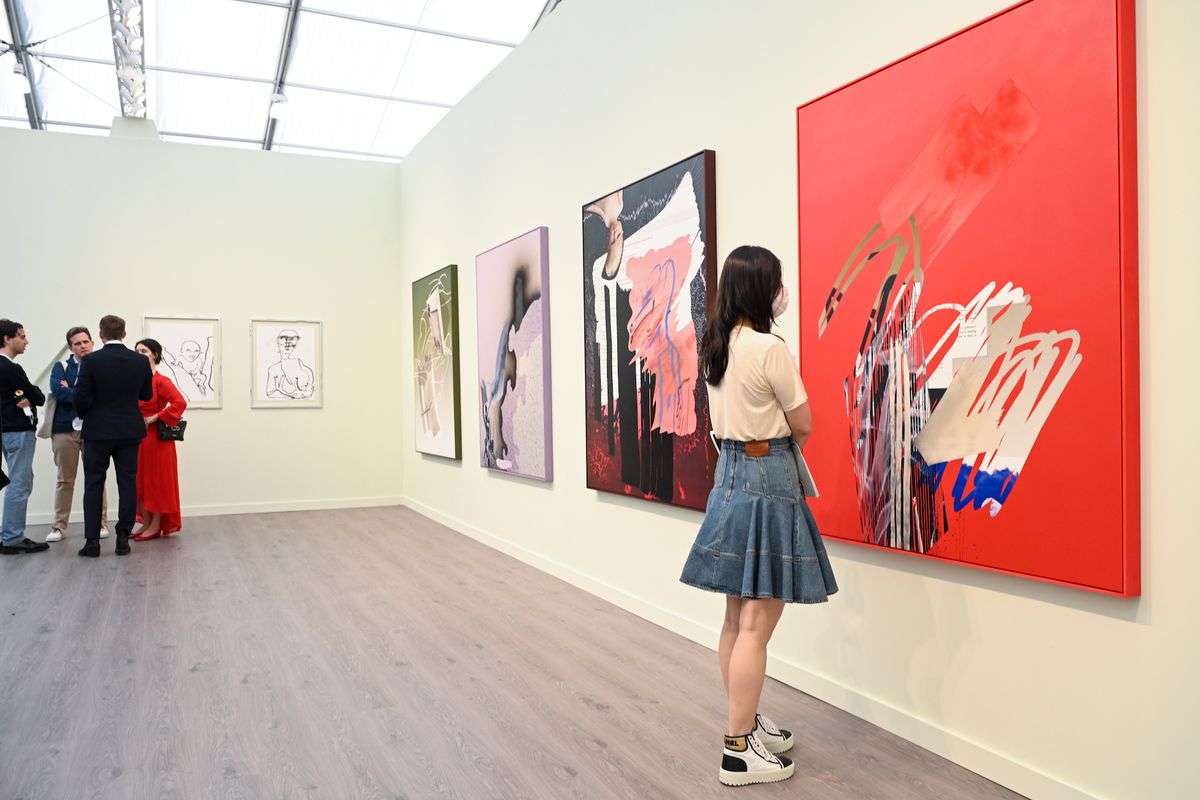During a prolonged sojourn at her mother’s home in France during the summer of 2020, the artist Camille Henrot undertook what many of us did in the early days of the Covid-19 pandemic: she decided to tidy up.
While reorganising and decluttering her mother’s vast collection of books, she came across several on etiquette, which became the sprout that grew into her body of work Dos and Don’ts, selections of which are on view at Hauser & Wirth’s stand, which is dedicated solely to her work. (Among the tomes of inspiration was the charmingly titled Don’t: A Manual of Mistakes and Improprieties More or Less Prevalent in Conduct and Speech.)
Instead of trashing the arguably old-fashioned books, she chose to explore why she was so critical of them. “I like the ambivalence of etiquette—that it is both an authoritative voice that is disrupting, suffocating at times, but also perhaps a manual to access other people’s customs and behaviours,” Henrot says. At a time when many were focused on self-care, she came to think of the books “as a sort of tool to learn how to engage and live with others in a less self-focused way”.
Her booth also features drawings from her series Biting the Hand that Feeds and System of Attachment, which she says were prompted from “a certain state of discontent with authority, and the strategies we develop to cope with authority”. But there is more than the spirit of struggle in the work. During the pandemic Henrot broke her wrist and was unable to paint or draw during the six-month recuperation process.
“My zone of operation shrank to the computer desktop, and I worked a lot with graphic palettes and Apple Pencil, taking screenshots,” she says. “I had a lot of frustration with these tools initially, being unable to work with actual paper, brushstrokes and manual motion. A lot of the works in my booth at Frieze Los Angeles carry the joy of recovery—being able to make movement happen again.”


